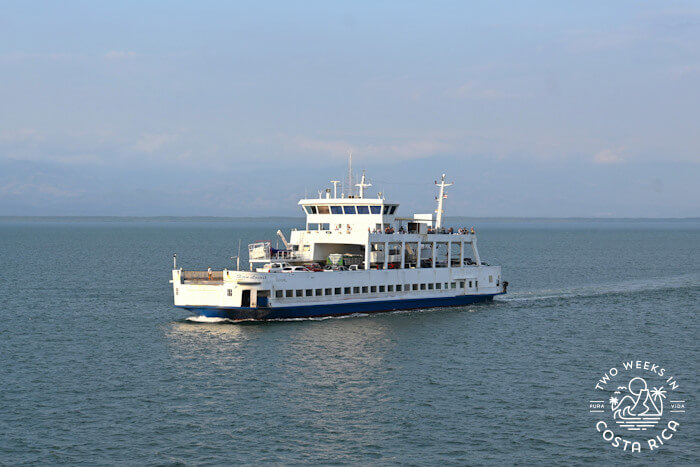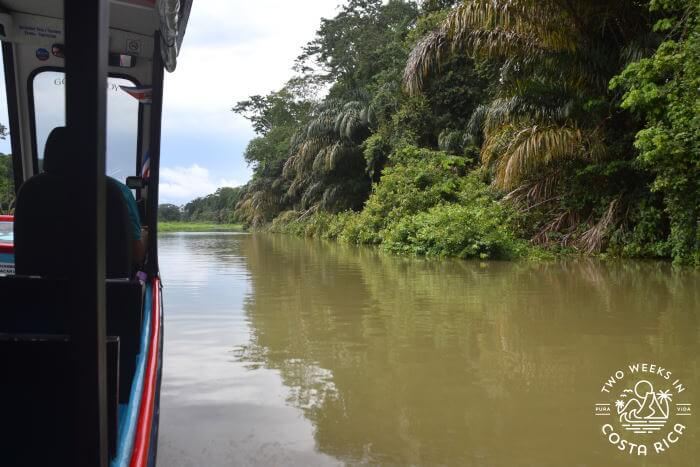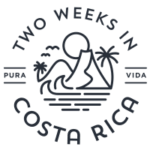Last Updated: February 24, 2023
The novel Coronavirus (COVID-19) has continued to be a hot topic for travelers. We’ve had many readers and clients inquire about how Costa Rica is dealing with the Coronavirus, if there are any travel restrictions, and whether they should modify their plans. In this post, we will give you as much information as possible about the situation in Costa Rica along with links to official government websites and announcements so that you can ensure you have the most accurate and up-to-date news.

Current Situation
Is Travel Allowed?
Yes, residents from all countries can enter Costa Rica by land, air, or sea. There is no travel ban.
Is a COVID Test Required for Costa Rica?
A COVID test is not required to enter Costa Rica for most travelers. For example, travelers from the United States, Canada, Latin America, and Europe do not need to be tested for COVID-19 when visiting Costa Rica.
As of January 9, 2023, only residents of the following countries or people who have visited these areas (within 14 days) must show proof of vaccination and a negative COVID-19 test upon entry into Costa Rica.
- China
- Hong Kong
- Macau
- Taiwan
For these select travelers, tests must be done 72 hours or less before entry into Costa Rica. A PCR-RT or Antigen test is accepted. The document must be in Spanish or English.
People over 12 must submit their negative test result as well as proof of a full vaccination scheme against COVID-19.
Children age 2-11 only need a negative COVID-19 test and do not need to show proof of vaccination.
Children under age 2 have no COVID-related requirements to enter Costa Rica.
Some countries are requiring a negative Covid test before you fly back home. For a robust list of testing locations around Costa Rica, see our post, Where to Get a Covid-19 Test in Costa Rica.
Newest COVID Stats
During week 7 (February 12 to 18, 2023) there were 5,109 active cases of COVID-19 reported in Costa Rica. This was 624 more than the previous week.
To see a graph of cases, from 2020 to now, visit the Ministerio de Salud’s website here.
Notable Developments
- Travel Advisory: The US Department of State’s travel advisory for Costa Rica is currently at level 2. This level is the same as it was before the pandemic.
- Masks: Masks are not mandatory for indoor/outdoor spaces (as of May 2022). Masks are currently only required inside medical facilities and on public transit (buses, trains, ferries, etc.). Businesses do have the right to require a mask but in our experience, almost none are doing so.
- Vaccination Rate: As of January 18, 2023, 89.2% of Costa Rica’s population has had at least one Covid vaccine shot. 83.6% have two doses. 54.9% have received a third dose. 9.3% have received a fourth dose. You can read more in our post, Covid Vaccination Rates in Costa Rica
Quarantine Period
All individuals who test positive for COVID-19 in Costa Rica are given a government issued health order to remain in their home, a hotel, or a vacation rental. Currently the length of quarantine is anywhere from 7 to 10-days (usually 7). Read our full article about testing positive for Covid-19 in Costa Rica for more details on the government’s process and to read the experiences of travelers who have tested positive themselves.
Where to Get Updates and information
Official announcements are published on the Ministry of Health News website. They also share information to their Facebook Page.
For more details about COVID-19 and it’s typical symptoms, you can visit the World Health Organization’s website.
History of COVID-19 in Costa Rica
First Cases in Costa Rica
Costa Rica’s first cases of COVID-19 were two individuals (a couple) who traveled from New York to Costa Rica on March 1, 2020 (both age 49). The man was in contact with someone who had the virus in the US before he traveled. He did not show any symptoms, but his wife began showing symptoms during their trip and then tested positive. Both fully recovered in March 2020, finished a 14-day quarantine, and were able to return home
Shortly after the couple was diagnosed, a doctor from Alajuela (male, age 54) who returned from Panama on February 22, 2020 started showing symptoms. More than 25 of the first Costa Rican citizens who tested positive were directly linked with that man.
The first COVID-19 fatality in Costa Rica was recorded on March 18, 2020.
Travel Restrictions/Travel Ban
Costa Rica closed its borders (land, air, and sea) to all foreign travelers on March 18, 2020. This closure lasted until July 31, 2020.
Closures
Like many countries, Costa Rica closed many businesses and public areas/services at the start of the pandemic. By the end of March 2020, only grocery stores, hardware stores, pharmacies, and medical clinics were open to the public.
Additionally, Costa Rica imposed driving restrictions to limit the movement of people and spread of the coronavirus. Vehicles were only able to drive during certain hours and only on specific days, based on license plate number.
For more about what it was like during this time, read our post: Covid-19 in Costa Rica: Living Here Through the Pandemic
Local Reopening Measures
In late April, 2020, Costa Rican officials announced that countrywide restrictions would begin to be loosened gradually and on a trial basis.
This began as a four-phase plan. Each phase opened more businesses and services, while at the same time implementing strict sanitary guidelines. For example, restaurants were allowed to reopen at 50% capacity.
Three phases of the reopening plan were implemented but the fourth phase (originally scheduled for July, 2020) was postponed due to a rise in COVID-19 cases.
Instead of going forward with the fourth phase, the government made individual adjustments to the measures at various times. For example, in June and July 2020, local tourism was encouraged with the reopening of hotels, beaches (for limited hours), and national parks. Officials always stressed that restrictions could be put back into place if they saw a rise in the number of cases.
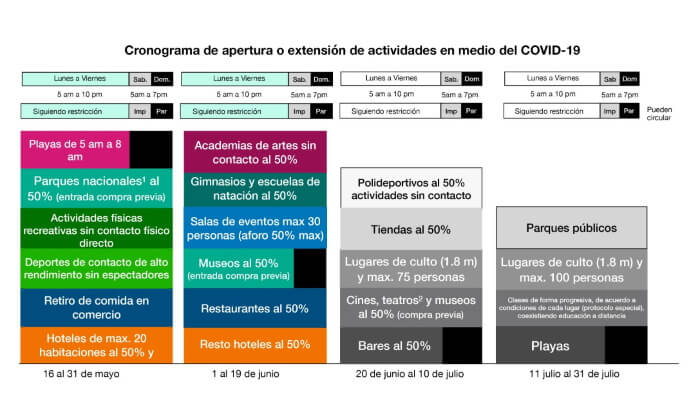
International Reopening Measures
On August 1, 2020 Costa Rica’s international airports reopened to tourists from some countries. More countries and many U.S. States were slowly added to the list. Travelers needed to show a negative COVID-19 test upon entry.
On October 26, 2020 the requirement for travelers to have a negative COVID-19 test was eliminated. However visitors needed to show proof of travel insurance which covered COVID quarantine expenses. Travelers also needed to fill out an online health form, called the Health Pass.
By November 1, 2020, there was no longer any travel ban. Residents from all countries and all US states could enter Costa Rica by air or sea (land borders remained closes). Insurance and the Health Pass form were still required.
Land borders, which had remained closed to everyone but truck drivers, finally reopened on April 5, 2021.
By April 1, 2022 there were no longer any Covid specific requirements to enter Costa Rica. The insurance requirement and online health form were eliminated.
How Has Costa Rica Dealt with Coronavirus?
Overview
Costa Rican authorities have been very proactive in helping to prevent COVID-19 from spreading within the country. Social distancing and new sanitary practices were the biggest measures taking place countrywide.
Below are some of the specific actions that Costa Rica has taken during the pandemic. You might also like our post: Covid-Travel: What it is like in Costa Rica Right Now, which detailed what it was like to travel around the country once tourism was reactivated and how locals and tourists dealt with the situation.
Specific Actions
Here are some notable actions taken:
• By February, 2020 Costa Rica had the proper laboratory test for diagnosing COVID-19. All government testing was through INCIENSA, the country’s Center of Disease Investigation. Later private testing became available. For private testing options available now, see our post, Where to Get a Covid-19 Test in Costa Rica
• Hospitals as well as emergency services (like 911) put protocols in place to deal with patients showing or describing symptoms. Additionally, a dedicated COVID-19 hospital was set up in the San Jose area. The public health system also temporarily expanded its intensive care (ICU) bed capacity.
• A new telephone hotline (1322) was put in place that was dedicated to Coronavirus consultations. This number has now been eliminated. 911 remains available for urgent health situations and other emergencies.
• Campaigns by the government-run healthcare system (CCSS) were informing and continue to inform the public of preventative techniques. They have delivered the information through television, radio, and social media.
• The Ministry of Health issued new guidelines for businesses. These specified cleaning and sanitary procedures as well as occupancy limits. Most have since been lifted.
• The Ministry of Health regulated the use of masks in public and commercial establishments, certain public spaces, transit options, etc. Costa Rica’s new president (who took office May 8) has since removed that requirement, except for frontline workers.
• Costa Rica contracted with global pharmaceutical companies and other nations to supply the country with sufficient doses of COVID-19 vaccine. The majority have been through Pfizer-BioNTech but some have come from AstraZeneca.
• The public healthcare system is currently vaccinating the general population ages 5-years old and up. As of January 18, 89.2% of the population has had at least one Covid vaccine shot. 83.6% have received two doses and 54.9% have received a third dose and 9.3% have received a fourth dose. Read our article, Covid Vaccination Rates in Costa Rica, for more information.
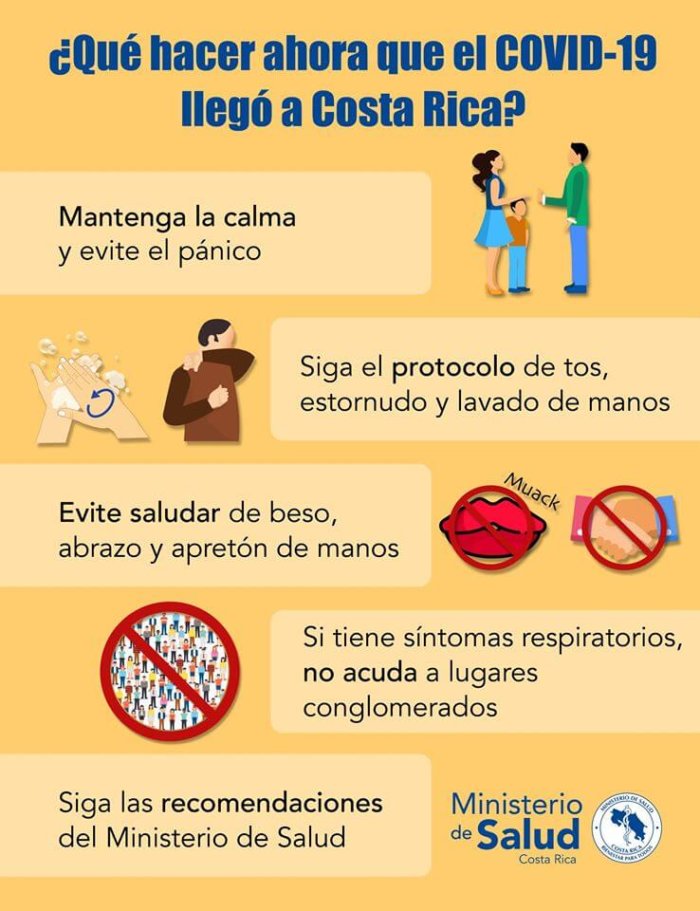
Current Measures
Currently businesses can operate with normal hours.
Masks are no longer required in closed and/or indoor spaces (inside stores, theaters, malls, banks, and shared vehicles like vans, buses, etc.). This requirement was lifted by Costa Rica’s president on May 8, 2022.
Masks are only mandatory inside medical facilities and on public transit.
Events and activities are allowed without changes to normal occupancy limits.
Current Vehicle Restrictions
Driving curfews were eliminated (as of March 7, 2022).
Driving restrictions based on license plate number have been eliminated as of November 1, 2020 (except for in downtown San Jose where normal traffic control restrictions, based on license plate number, still exist).
Note: Tourism related vehicles (e.g. shuttle vans/tour vans) as well as rental cars have always been exempt from any driving restrictions.
Protecting Yourself
If you are coming to Costa Rica, consider official warnings from health officials on travel and self-care. Best practices include:
- Regular and thorough hand washing (at least 20 seconds)
- Disinfecting surfaces
- Always covering the mouth and nose when coughing and sneezing.
- Wearing a mask properly.
- Avoiding close contact with anyone showing symptoms of respiratory illness such as coughing and sneezing
- Staying home at the first sign of symptoms
If you fit into the category of a high-risk individual, determine if travel to Costa Rica is necessary or should be postponed. According to the CDC’s website, people of high risk may be:
o Older adults
o People who have serious chronic medical conditions like heart disease, diabetes, or lung disease

What If You Get Sick During Your Trip?
If someone comes down with symptoms of Coronavirus during their trip to Costa Rica, they can be tested for free at any public hospital (only when showing symptoms). For emergency situations use 911.
An extensive network of private hospitals, clinics, and labs are also available for testing. Before arrival, you should notify them that you have symptoms. For information on private testing locations see our post, Where to Get a Covid-19 Test in Costa Rica.
In addition, private urgent care facilities are available to provide more help. We received information from a local doctor who we trust about the process of what would happen. He said that Costa Rica has implemented international protocols for urgent care providers. If someone presents with symptoms of an upper respiratory tract infection (sore throat, fever, coughing, sneezing, headaches), the doctor will evaluate them, and if necessary, report a positive case to INCIENSA (Costa Rica’s Center of Disease Investigation).
The person will be told to remain in isolation at his or her current location (hotel or vacation rental) so as not to potentially spread the virus. After this, the doctor will work with the Ministry of Health on how to proceed with the patient. They will only transport a patient to a higher grade care center like a hospital if they have acute respiratory distress and their vital signs are not stable.
These type of private urgent care facilities are located all around the country and basically all have English-speaking doctors. You can find them in Quepos/Manuel Antonio, Jaco, Tamarindo, Monteverde, La Fortuna, Samara, and many more towns that are popular for visitors.
What if I test positive for Covid before my departure flight home?
If you test positive for Covid-19 after a test, you will be issued a sanitary order by the Costa Rican government directing you to quarantine. Usually a 7 day quarantine is issued but technically the quarantine period can be from 7 to 10 days.
For much more about what happens in this scenario, read our post Testing Positive for Covid in Costa Rica.
Conclusion
We hope this post will help you understand the current Coronavirus situation in Costa Rica. While not a fun topic, it is important to share all the details as they develop. Viewing this all from Costa Rica, we have been impressed with the government’s response. You can read more about our experience living through the early part of the pandemic in Costa Rica here.
We hope everyone stays safe and doesn’t have to change their travel plans. If you do have to postpone, we hope that you’ll be able to visit soon!
Additional Resources
World Health Organization’s (WHO) – Latest Updates on COVID-19
European Centre for Disease Prevention and Control – Latest Updates on COVID-19
Center for Disease Control and Prevention (CDC) – Information for Travel
Johns Hopkins – Map of confirmed cases worldwide
The Tico Times – English-language online newspaper in Costa Rica
Disclaimer: We are not experts in disease prevention or doctors and are not intending to give medical or other professional advice. If you’re unsure if you should travel to Costa Rica, consult the CDC (Center for Disease Control) and WHO (World Health Organization) websites for more information or seek the advice of a medical professional.
Last Updated: February 24, 2023
Are you hoping to visit Costa Rica soon? Here are some resources to help you plan:
Rental Car Discount – Looking for a rental car for your upcoming trip. Use our discount to save 10-20% and receive free extras like a second driver, cell phone, and more.
Traveling to Costa Rica During Covid-19: Entry Requirements, Protocols & What to Expect – This post has all of the information you will need to know ahead of time. Includes what to expect for safety protocols at the airport, hotels, attractions, and more.
Preflight Testing for Departing Costa Rica: Logistics and Tips – Do you need a negative Covid test to return to your home country? This article will summarize the requirements and give you tips to make the process as easy as possible.
Packing for Costa Rica – Wondering what you need to pack for Costa Rica’s mountains vs. the beach? We’ve got it all covered in this post. Includes recommendations for rainy season travel as well.
Weather in Costa Rica – Learn about the different seasons and why you can’t rely on your phone’s weather App. for accurate info. Includes charts of past weather data to help you plan.

